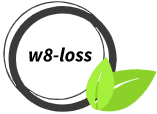Table of Contents
Good and Bad Fats

There are good fats and bad fats. There are also saturated and trans fats. Read on to discover what these fats are and which ones are best for your body. These fats are solid at room temperature and can have adverse health effects. These fats also tend to raise cholesterol levels. Consequently, eating a diet high in these types of fats is a bad idea. Read on for more information. But first, let’s define the difference between good and bad fats.
Polyunsaturated fats
Monounsaturated and polyunsaturated fats are plant-based and usually liquid at room temperature. In moderation, polyunsaturated fats are good for you. Monounsaturated fats are found in foods like nuts, seeds, olives, and avocados. Polyunsaturated fats are good for you because they lower LDL cholesterol levels. While they are high in calories, polyunsaturated fats are healthy in most cases.
When choosing between mono and polyunsaturated fats, you should look for foods with these types of fat. These fats lower LDL cholesterol and help prevent heart disease. Omega-3 fats are particularly good for you, as they are found in fish and algae. They help protect the heart and prevent memory loss. You should also consider eating foods with omega-3 fatty acids. These fats are found in olive oil, flaxseed, walnuts, and fish.
Some people are concerned about the high LDL cholesterol and other cardiovascular risks associated with saturated fats. However, it is important to remember that replacing these fats with polyunsaturated fats can lower your triglyceride levels and protect your heart from heart disease. In addition to this, they also lower triglycerides. And, unlike saturated fat, polyunsaturated fats have been shown to lower the risk of heart disease.
Saturated fats
Traditionally, it was thought that consuming more saturated fats was unhealthy. But recent research by Harvard University has suggested that saturated fats are not as bad as previously thought. The bad kind are found in animal products and foods that are high in sugar. So, what are good and bad fats? There are two kinds of fats – polyunsaturated fats and monounsaturated fats.
Saturated fats come mainly from animal sources, like beef and pork. Some plant sources also contain high levels of saturated fat. It is recommended that dietary intake of saturated fats be kept to a minimum of 5% to 6% of total calories. Instead of red meat, switch to chicken or fish, and use canola or olive oil instead of butter. Low-fat dairy products and whole grains are also good sources of saturated fat.
Saturated fats have been labelled as bad for years. Recent research, however, questions whether these fats are really bad for you. The findings of the new study, published in Annals of Internal Medicine, should prompt consumers to re-examine their diets. Meanwhile, the American Heart Association and other experts disagree. While the new study supports the notion that fat isn’t good for you, it doesn’t mean that saturated fat is unhealthy.
Trans fats
The main source of trans fats is partially hydrogenated oils, which are often found on the label of processed food. These oils were once considered GRAS (generally recognized as safe) for use in human food. However, the U.S. Food and Drug Administration recently ruled that they are no longer acceptable in human food. Hence, avoiding these fats is crucial for a healthy diet. The following are ways to reduce your intake of trans fats in your daily diet.
Fortunately, there are ways to reduce your trans fat intake without depriving yourself of all the delicious foods you love. For one, you can limit your intake of processed foods by switching to more natural sources. Natural fats from animal products, nuts, and seeds are beneficial to your health. Monounsaturated fats are also good. But, the American Heart Association recommends limiting the amount of trans fats in your diet. As long as you eat less than 2 grams per day, you’ll be just fine. However, reducing trans fats is not a magic bullet. Instead, it is just one part of a healthier lifestyle.
Natural trans fats can be found in foods, but you should stay away from processed ones. Thankfully, there are many natural sources of trans fats, including olive oil, canola, and safflower oils. Most processed foods are made using partially hydrogenated vegetable oils, and this means that you’re likely to find them in fast food restaurants and baked goods. It is best to avoid products containing trans fats and choose those that contain natural oils.
